Prestressed Unbonded Reinforcement System with Multiple CFRP Plates for Fatigue Strengthening of Steel Members †
Abstract
:1. Introduction
2. Finite Element Simulation
2.1. Model Description
2.2. Finite Element Results
3. Experimental Program
3.1. Test Specimens
3.2. Prestressed Unbonded Reinforcement (PUR) System
3.2.1. Mechanical Clamps
3.2.2. Prestressing Setup
3.3. Material Properties
3.4. Static and Fatigue Test Setup
4. Results and Discussions
4.1. Static and Fatigue Tests on the Proposed Mechanical Clamping System
4.2. Performance of the Proposed PUR System for Fatigue Strengthening of Cracked Steel Members
5. Summary and Conclusions
Acknowledgments
Author Contributions
Conflicts of Interest
Nomenclature
| CFRP | Carbon fiber reinforced polymer | N | Number of fatigue cycles (-) |
| EDM | Electrical discharge machine | R | Fatigue loading ratio (-) |
| NM | Normal modulus | Tmax | Maximum tensile fatigue load (kN) |
| PBR | Prestressed bonded reinforcement | Tmin | Minimum tensile fatigue load (kN) |
| PUR | Prestressed unbonded reinforcement | μs | Friction coefficient (-) |
| SIF | Stress intensity factor | Δσ | Fatigue stress range (MPa) |
| ΔKI | Mode I SIF range (N/mm3/2) | σf,u | CFRP tensile strength (MPa) |
| ΔKI,th | Mode I threshold SIF range (N/mm3/2) | σy | Steel yield strength (MPa) |
References
- Schijve, J. Fatigue of Structures and Materials, 3rd ed.; Kluwer Academic: Dordrecht, The Netherlands, 2009; ISBN 9781402068072. [Google Scholar]
- Domazet, Ž. Comparison of fatigue crack retardation methods. Eng. Fail. Anal. 1996, 3, 137–147. [Google Scholar] [CrossRef]
- Bassetti, A. Lamelles Précontraintes en Fibres Carbone Pour le Renforcement de Ponts Rivetés Endommagés par Fatique. Ph.D. Thesis, Ecole Polytechnique Fédérale de Lausanne (EPFL), Lausanne, Switzerland, 2001. [Google Scholar]
- Tavakkolizadeh, M.; Saadatmanesh, H. Fatigue strength of steel girders strengthened with carbon fiber reinforced polymer patch. J. Struct. Eng. 2003, 129, 186–196. [Google Scholar] [CrossRef]
- Zhao, X.L.; Zhang, L. State-of-the-art review on FRP strengthened steel structures. Eng. Struct. 2007, 29, 1808–1823. [Google Scholar] [CrossRef]
- Zhao, X.L. FRP-Strengthened Metallic Structures, 1st ed.; CRC Press: Boca Raton, FL, USA, 2013; ISBN 9780415468213. [Google Scholar]
- Teng, J.G.; Yu, T.; Fernando, D. Strengthening of steel structures with fiber-reinforced polymer composites. J. Constr. Steel Res. 2012, 78, 131–143. [Google Scholar] [CrossRef]
- Fernando, N.D. Bond Behaviour and Debonding Failures in CFRP-Strengthened Steel Members. Ph.D. Thesis, The Hong Kong Polytechnic University, Hong Kong, 2010. [Google Scholar]
- Fernando, D.; Teng, J.G.; Yu, T.; Zhao, X.L. Preparation and characterization of steel surfaces for adhesive bonding. J. Compos. Constr. 2013, 17, 04013012. [Google Scholar] [CrossRef]
- Fawzia, S.; Al-Mahaidi, R.; Zhao, X.L. Experimental and finite element analysis of a double strap joint between steel plates and normal modulus CFRP. Compos. Struct. 2006, 75, 156–162. [Google Scholar] [CrossRef] [Green Version]
- Yu, T.; Fernando, D.; Teng, J.G.; Zhao, X.L. Experimental study on CFRP-to-steel bonded interfaces. Compos. Part B Eng. 2012, 43, 2279–2289. [Google Scholar] [CrossRef]
- Colombi, P.; Bassetti, A.; Nussbaumer, A. Crack growth induced delamination on steel members reinforced by prestressed composite patch. Fatigue Fract. Eng. Mater. Struct. 2003, 26, 429–438. [Google Scholar] [CrossRef]
- Colombi, P.; Fava, G.; Sonzogni, L. Fatigue crack growth in CFRP-strengthened steel plates. Compos. Part B Eng. 2015, 72, 87–96. [Google Scholar] [CrossRef] [Green Version]
- Colombi, P.; Fava, G. Experimental study on the fatigue behaviour of cracked steel beams repaired with CFRP plates. Eng. Fract. Mech. 2015, 145, 128–142. [Google Scholar] [CrossRef] [Green Version]
- Zheng, B.; Dawood, M. Debonding of carbon fiber–reinforced polymer patches from cracked steel elements under fatigue loading. J. Compos. Constr. 2016, 20, 04016038. [Google Scholar] [CrossRef]
- Lane, I.R.; Ward, J.A. Restoring Britain’s Bridge Heritage. Inst. Civ. Eng. South Wales Association, Transport Engineering Group Award. 2000. [Google Scholar]
- Miller, T.C.; Chajes, M.J.; Mertz, D.R.; Hastings, J.N. Strengthening of a steel bridge girder using CFRP plates. J. Bridge Eng. 2001, 6, 514–522. [Google Scholar] [CrossRef]
- Luke, S. The use of carbon fibre plates for the strengthening of two metallic bridges of an historic nature in the UK. In Proceedings of the 8th International Conference on Fibre-Reinforced Polymer (FRP) Composites in Civil Engineering (CICE 2001), Hong Kong, 12–15 December 2001; pp. 975–983. [Google Scholar]
- Ghafoori, E.; Motavalli, M. Innovative CFRP-prestressing system for strengthening metallic structures. J. Compos. Constr. 2015, 19, 04015006. [Google Scholar] [CrossRef]
- Ghafoori, E.; Motavalli, M.; Nussbaumer, A.; Herwig, A.; Prinz, G.S.; Fontana, M. Design criterion for fatigue strengthening of riveted beams in a 120-year-old railway metallic bridge using pre-stressed CFRP plates. Compos. Part B Eng. 2015, 68, 1–13. [Google Scholar] [CrossRef]
- Ghafoori, E.; Motavalli, M.; Nussbaumer, A.; Herwig, A.; Prinz, G.S.; Fontana, M. Determination of minimum CFRP pre-stress levels for fatigue crack prevention in retrofitted metallic beams. Eng. Struct. 2015, 84, 29–41. [Google Scholar] [CrossRef]
- Ghafoori, E.; Prinz, G.S.; Mayor, E.; Nussbaumer, A.; Motavalli, M.; Herwig, A.; Fontana, M. Finite element analysis for fatigue damage reduction in metallic riveted bridges using pre-stressed CFRP plates. Polymers 2014, 6. [Google Scholar] [CrossRef]
- Täljsten, B.; Hansen, C.S.; Schmidt, J.W. Strengthening of old metallic structures in fatigue with prestressed and non-prestressed CFRP laminates. Constr. Build. Mater. 2009, 23, 1665–1677. [Google Scholar] [CrossRef]
- Emdad, R.; Al-Mahaidi, R. Effect of prestressed CFRP patches on crack growth of centre-notched steel plates. Compos. Struct. 2015, 123, 109–122. [Google Scholar] [CrossRef]
- Koller, R.E.; Stoecklin, I.; Weisse, B.; Terrasi, G.P. Strengthening of fatigue critical welds of a steel box girder. Eng. Fail. Anal. 2012, 25, 329–345. [Google Scholar] [CrossRef]
- Hosseini, A.; Wellauer, M.; Ghafoori, E.; Sadeghi Marzaleh, A.; Motavalli, M. An experimental investigation into bond behavior of prestressed CFRP to steel substrate. In Proceedings of the Fourth Conference on Smart Monitoring, Assessment and Rehabilitation of Civil Structures (SMAR 2017), Zurich, Switzerland, 13–15 September 2017. [Google Scholar]
- Ghafoori, E.; Motavalli, M. Normal, high and ultra-high modulus CFRP laminates for bonded and un-bonded strengthening of steel beams. Mater. Des. 2015, 67, 232–243. [Google Scholar] [CrossRef]
- Ghafoori, E.; Motavalli, M. Lateral-torsional buckling of steel I-beams retrofitted by bonded and un-bonded CFRP laminates with different pre-stress levels: Experimental and numerical study. Constr. Build. Mater. 2015, 76, 194–206. [Google Scholar] [CrossRef]
- Ghafoori, E.; Motavalli, M.; Botsis, J.; Herwig, A.; Galli, M. Fatigue strengthening of damaged metallic beams using prestressed unbonded and bonded CFRP plates. Int. J. Fatigue 2012, 44, 303–315. [Google Scholar] [CrossRef]
- Kianmofrad, F.; Ghafoori, E.; Elyasi, M.M.; Motavalli, M.; Rahimian, M. Strengthening of metallic beams with different types of pre-stressed un-bonded retrofit systems. Compos. Struct. 2017, 159, 81–95. [Google Scholar] [CrossRef]
- Abaqus U.; Version 6.16.; Dassault Systèmes Simulia Corp.: Providence, RI, USA, 2016.
- Hosseini, A.; Ghafoori, E.; Motavalli, M.; Nussbaumer, A.; Zhao, X.L. Mode I fatigue crack arrest in tensile steel members using prestressed CFRP plates. Compos. Struct. 2017, 178, 119–134. [Google Scholar] [CrossRef]
- Hosseini, A.; Ghafoori, E.; Motavalli, M.; Nussbaumer, A.; Zhao, X.L. Stress Analysis of Unbonded and Bonded Prestressed CFRP-strengthened Steel Plates. In Proceedings of the 8th International Conference on Fibre-Reinforced Polymer (FRP) Composites in Civil Engineering (CICE2016), Hong Kong, 14–16 December 2016; pp. 1179–1186. [Google Scholar]
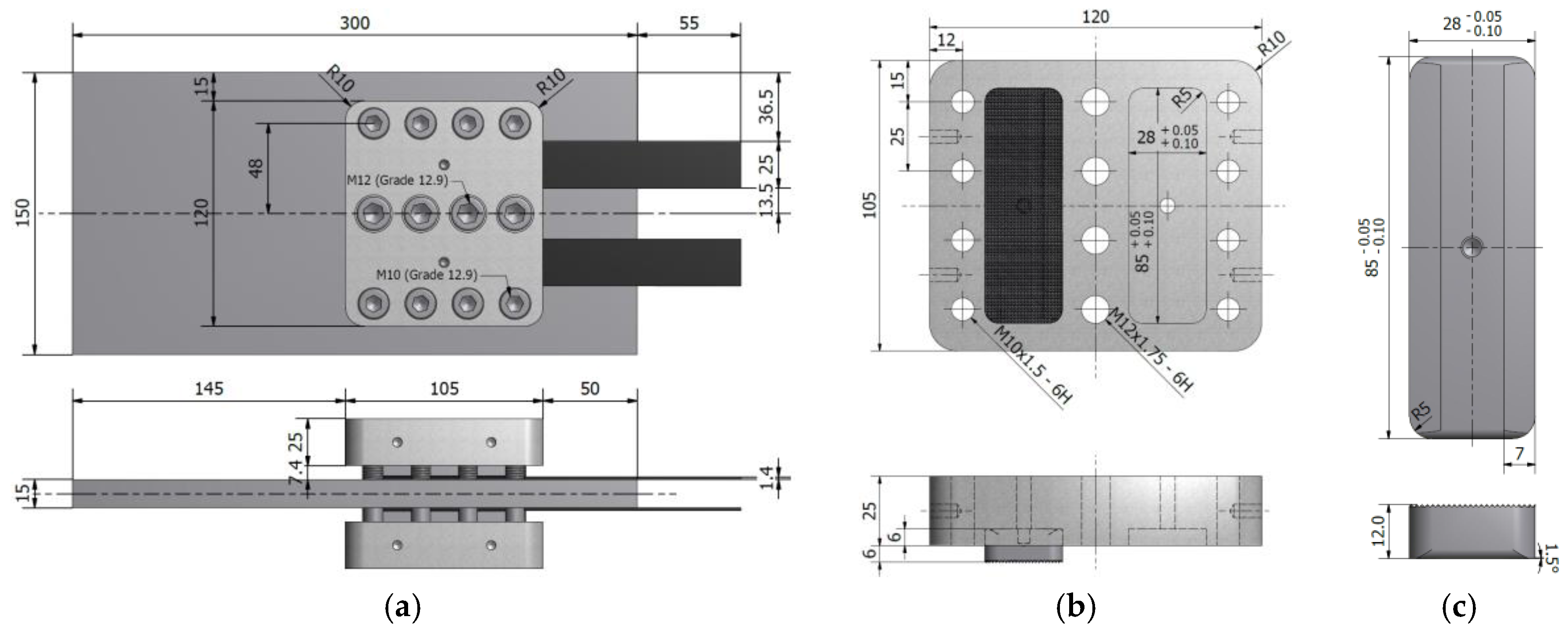
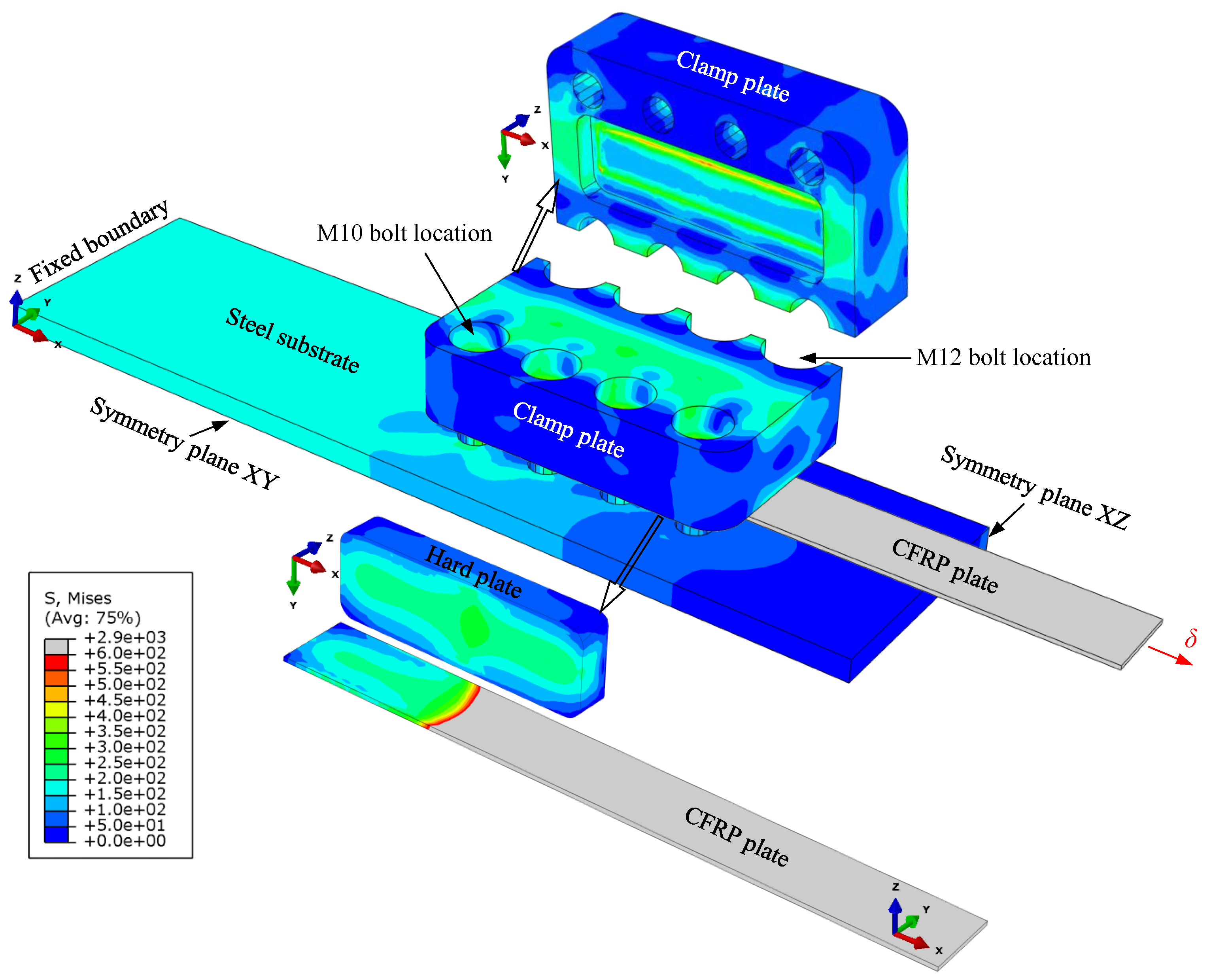
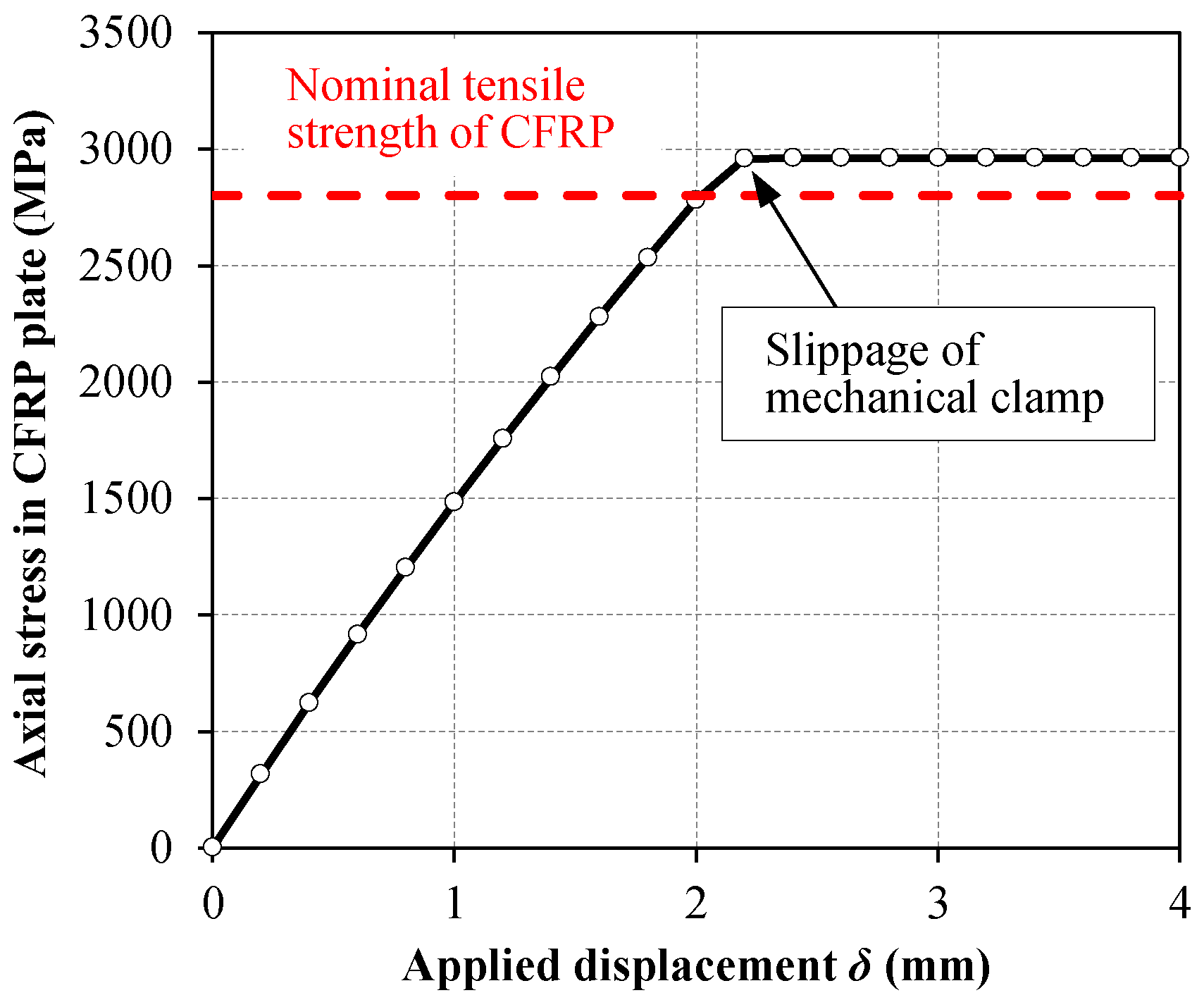
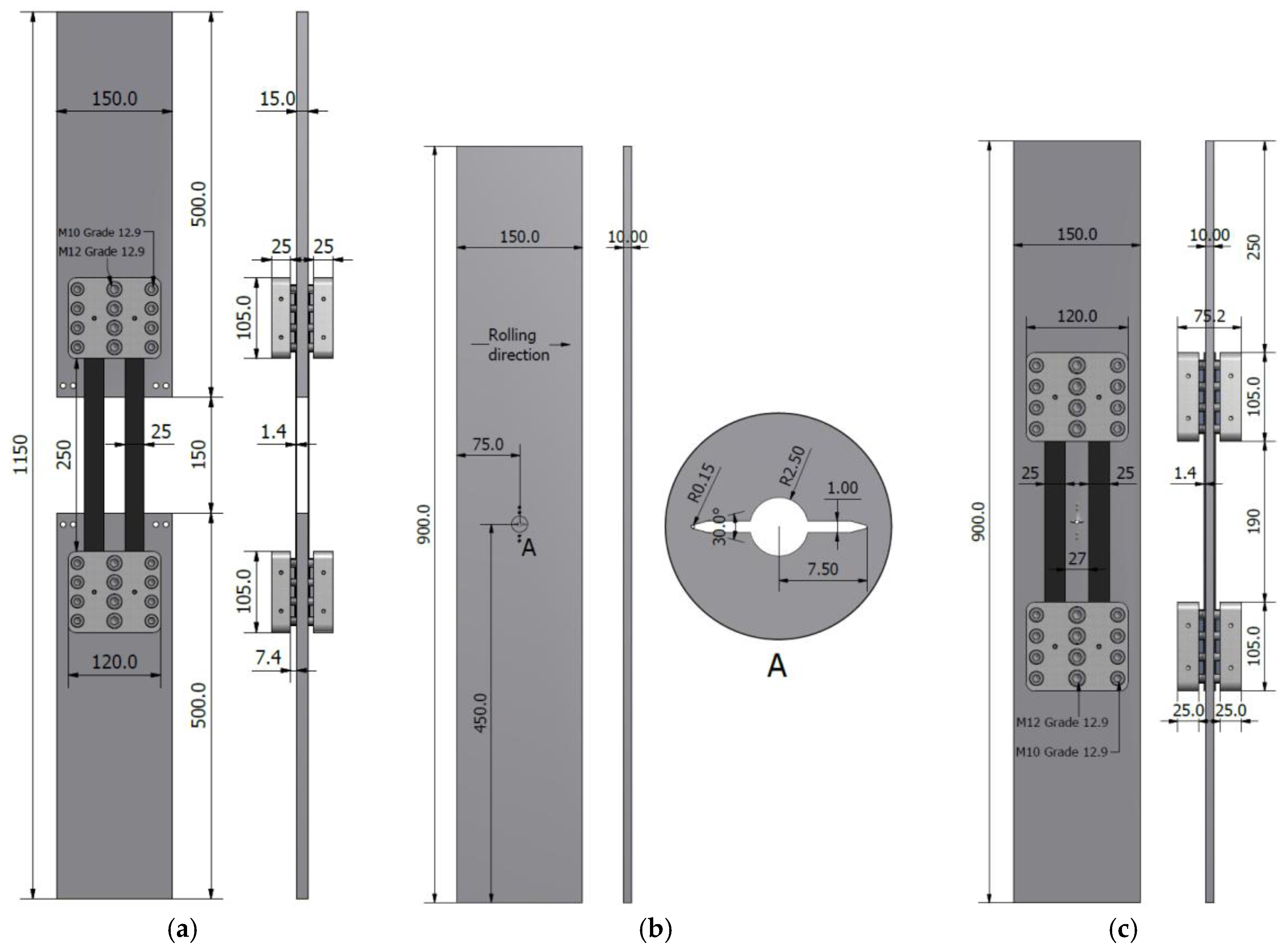
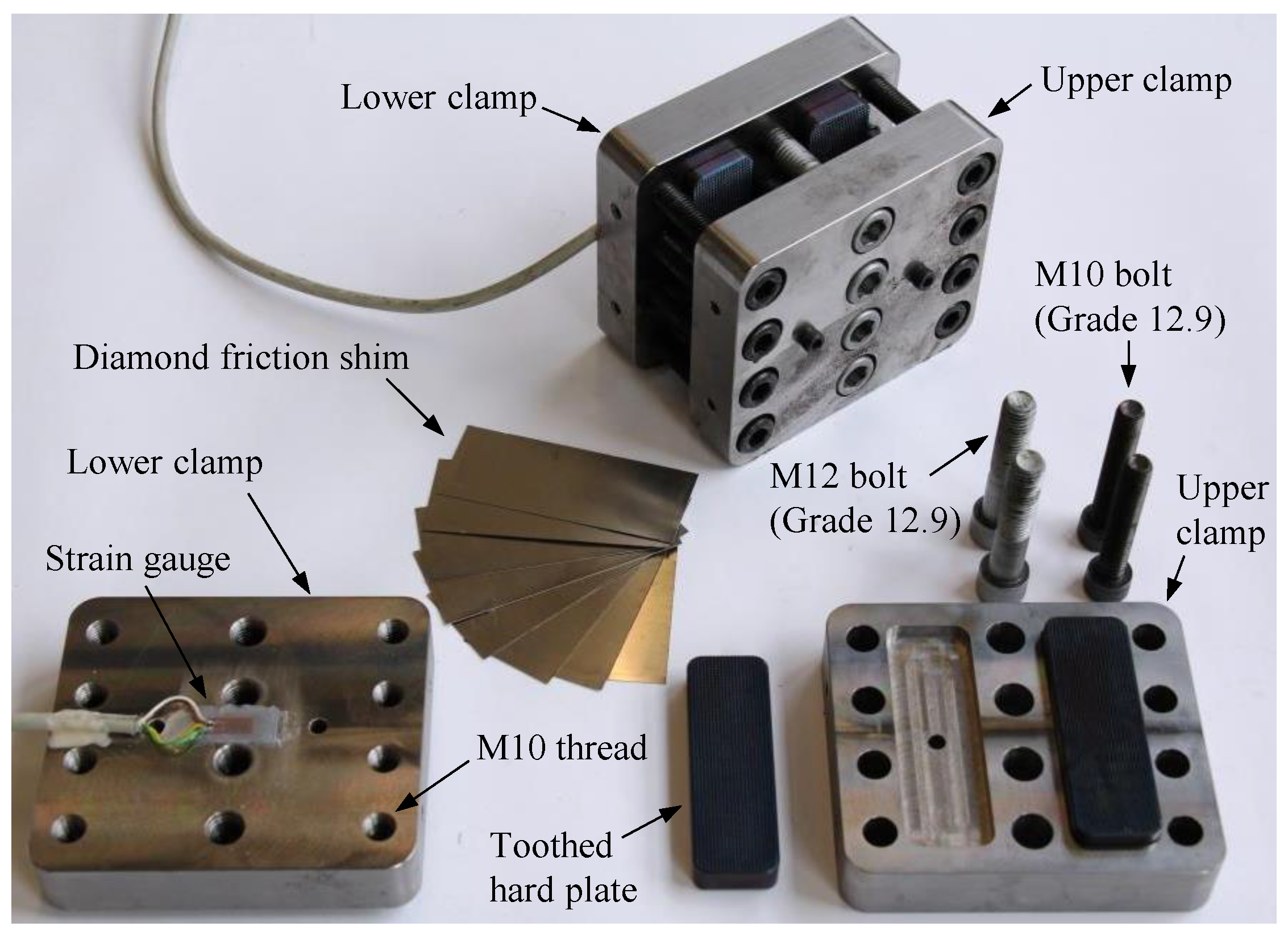



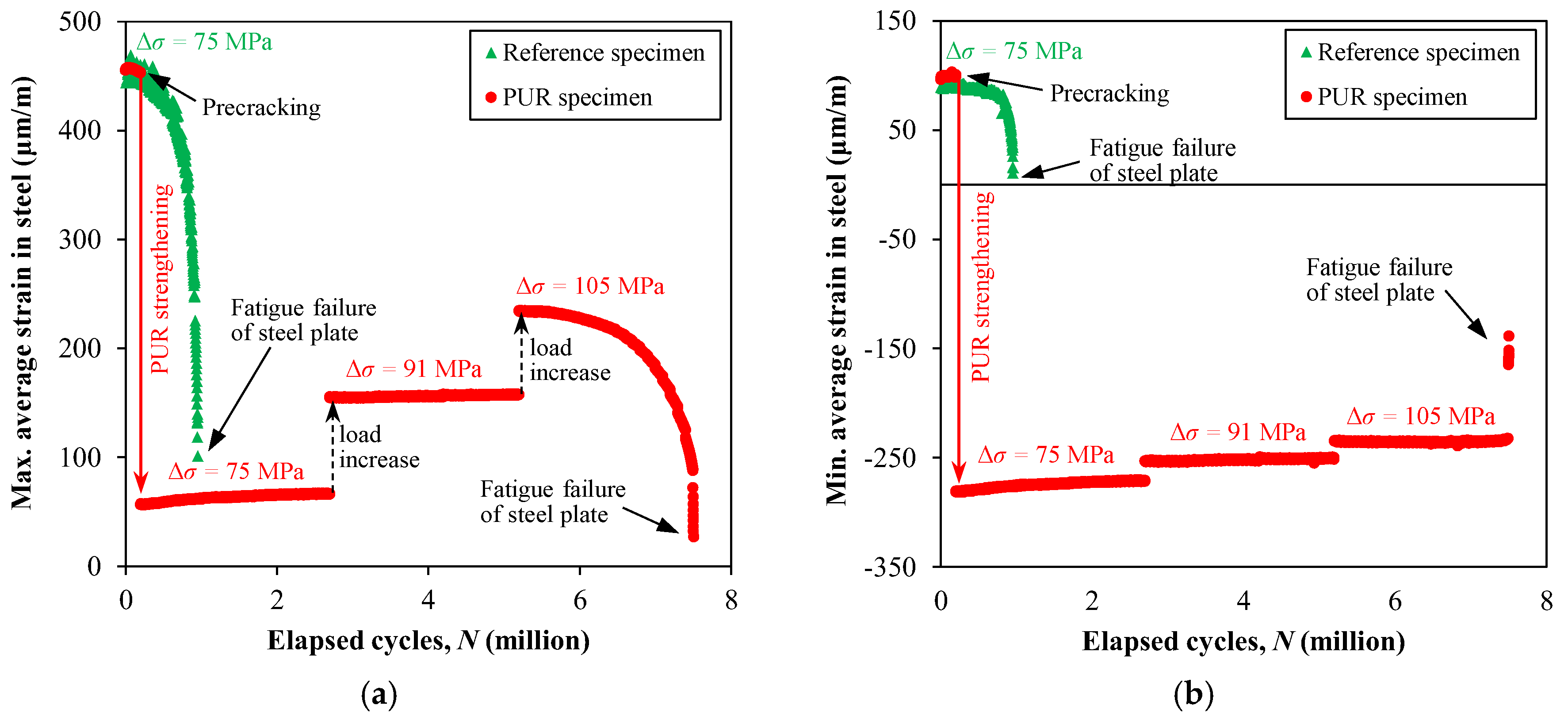
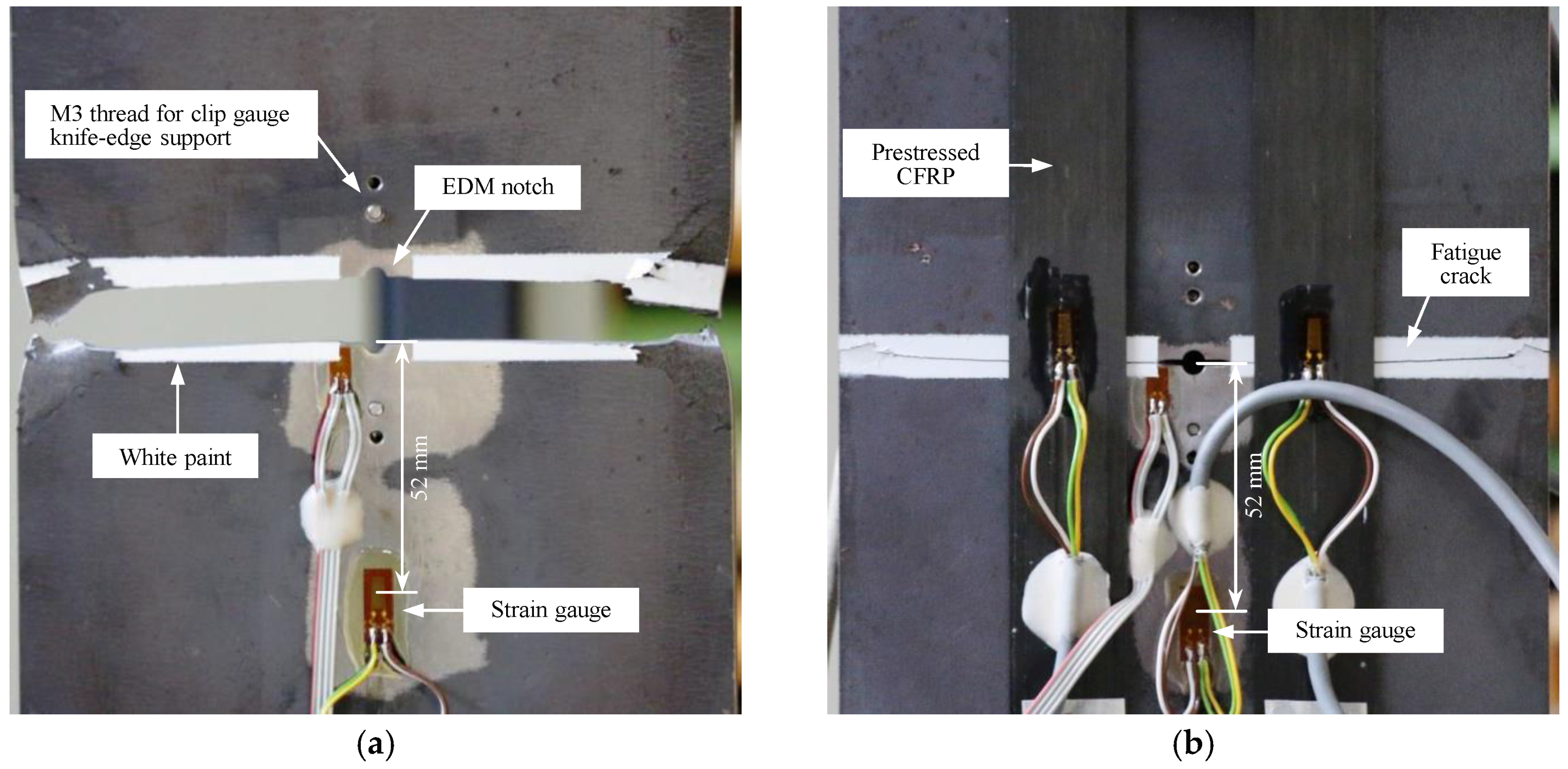
© 2018 by the authors. Licensee MDPI, Basel, Switzerland. This article is an open access article distributed under the terms and conditions of the Creative Commons Attribution (CC BY) license (http://creativecommons.org/licenses/by/4.0/).
Share and Cite
Hosseini, A.; Ghafoori, E.; Motavalli, M.; Nussbaumer, A.; Zhao, X.-L.; Koller, R. Prestressed Unbonded Reinforcement System with Multiple CFRP Plates for Fatigue Strengthening of Steel Members. Polymers 2018, 10, 264. https://doi.org/10.3390/polym10030264
Hosseini A, Ghafoori E, Motavalli M, Nussbaumer A, Zhao X-L, Koller R. Prestressed Unbonded Reinforcement System with Multiple CFRP Plates for Fatigue Strengthening of Steel Members. Polymers. 2018; 10(3):264. https://doi.org/10.3390/polym10030264
Chicago/Turabian StyleHosseini, Ardalan, Elyas Ghafoori, Masoud Motavalli, Alain Nussbaumer, Xiao-Ling Zhao, and Roland Koller. 2018. "Prestressed Unbonded Reinforcement System with Multiple CFRP Plates for Fatigue Strengthening of Steel Members" Polymers 10, no. 3: 264. https://doi.org/10.3390/polym10030264





